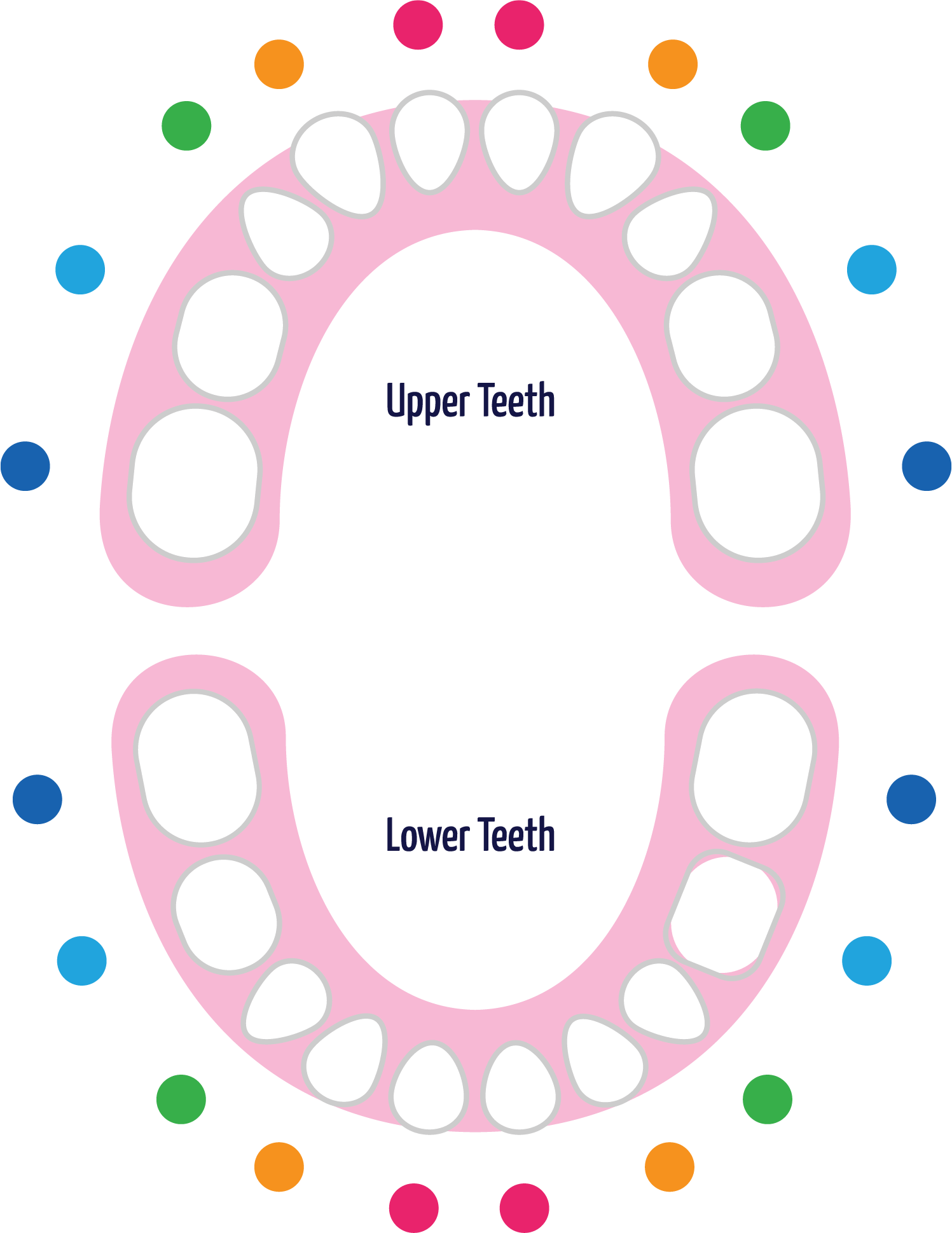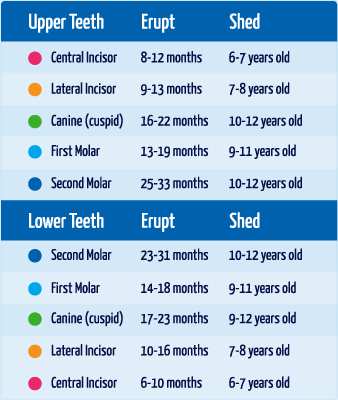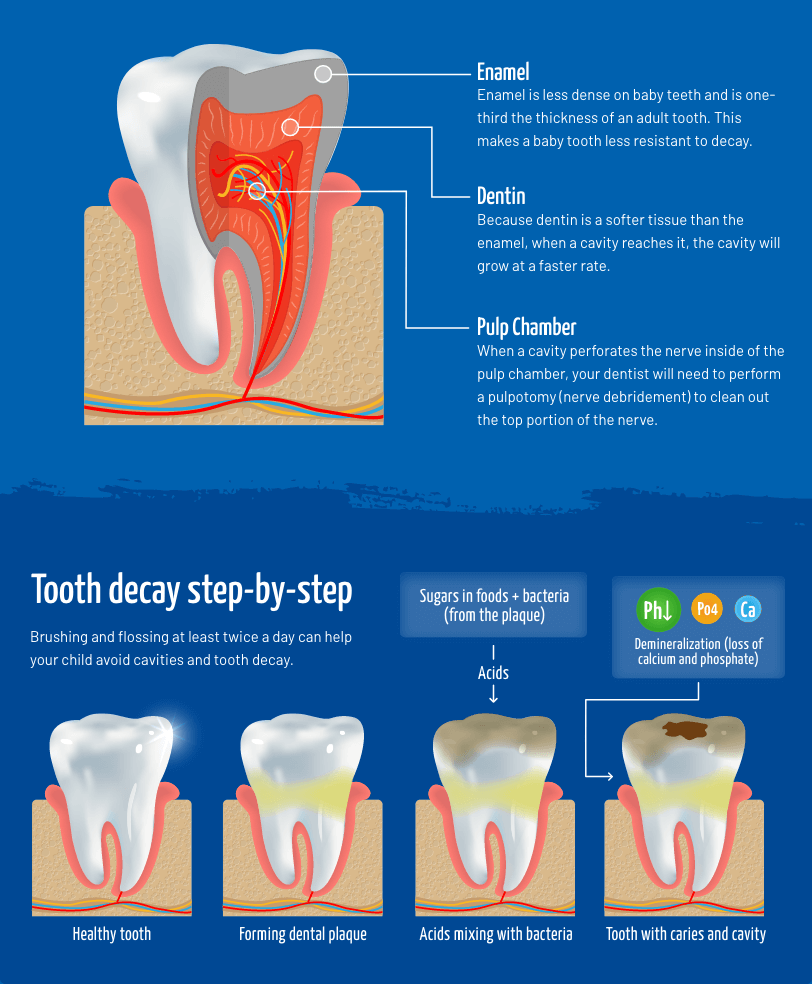Important facts about childhood dental development.
What is the difference between a baby tooth and an adult tooth?
We all start out with a set of baby teeth, which eventually fall out and are replaced by our adult teeth. One of the easiest ways to differentiate between adult teeth and baby teeth is quantity. Children have 20 baby teeth which typically start to erupt at around 6 months of age - whereas adults have 32 teeth (including the 4 wisdom teeth). Additionally, baby teeth are a bit smaller and more square-shaped than adult teeth. Their incisors erupt with three little ridges (called mamelons) and they have flatter biting edged than an adult’s incisors — which have a more rounded edge.
Now appearing...BABY TEETH!
The first tooth is a milestone, so you’ll likely want to know when can you expect that first little tooth-nugget to arrive. We’ve developed a helpful chart that will give you a good idea of when to expect your baby’s teeth to erupt (as well as when to expect them to be replaced with adult teeth).
How a cavity or tooth decay can form and damage your child’s teeth.
A cavity begins to develop when particles of food mix with bacteria in the mouth and create plaque. After eating a meal or a snack, that bacteria turns the carbohydrates (sugars) in foods and drinks into aggressive acids that attack the tooth enamel. When the enamel begins to break down or wear away, that acid has access to the soft layer beneath called the dentin and further damage can occur.
Helpful tips on how to prevent cavities or tooth decay.
A regular routine of good dental and oral hygiene can keep your child’s teeth healthy. We’ve developed a list of a few helpful tips to help avoid any potential cavities or unnecessary tooth decay:
- Teach your child to brush their teeth at least twice a day (or help your younger ones to do so)
- Use toothpaste with fluoride starting at age 2. Your pediatric dentist will instruct you on the safe amounts to use for younger children.
- Floss your child’s teeth daily to remove the plaque in-between teeth
- Try your best to limit sugary foods and drinks
- Help your child abstain from all-day sipping and frequent snacking. Frequency is more harmful than quantity when it comes to cavities.
- Ensure that your child drinks water throughout the day. This can help wash away some of the bad bacteria in your child’s mouth.
- Encourage a healthy diet. Fruits and vegetables can actually increase saliva flow which is helpful in washing away bad bacteria. Saliva contains mineral salts designed to help enamel stay strong.
- Visit your pediatric dentist regularly! Dental check-ups are recommended twice a year, starting at the first birthday or upon the eruption of your child’s first tooth. Regular dentist appointments can help you detect problems with your child’s teeth early on.
- Consider dental sealants. Protective sealants can help shield your child’s teeth for up to 10 years and reduce the risk of cavities.





